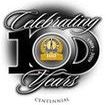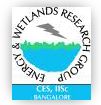 |
Land surface temperature with land cover dynamics: multi-resolution, spatio-temporal data analysis of Greater Bangalore |
 |
Introduction Many cities in developing countries are now undergoing rapid urbanisation evident from the increase in urban population from 13% (220 million) in 1900, to 29% (732 million) in 1950, to 49% (3.2 billion) in 2005 and is projected to rise to 60% (4.9 billion) by 2030 (WUP, 2005). Accurate and timely information in land use (LU) and LU changes is crucial for long-term economic development planning and also for short-term land management. Increase in paved land covers (LC) consequent to the concentrated human activities often leads to increased land surface temperatures (LST). Enhanced LST in certain urban pockets compared to its immediate surroundings consequent to the increase in paved surfaces is known as urban heat island (UHI) phenomenon (Landsbeg, 1981). Specifically, surface and atmospheric temperatures are increased by anthropogenic heat discharge due to energy consumption, increased land surface coverage by artificial materials having high heat capacities and conductivities, and the associated decreases in vegetation and water impervious surfaces, which reduce surface temperature through evapotranspiration (Kato and Yamaguchi, 2005). Temperatures have been monitored through space borne remote sensing (RS) sensors, which measure top of the atmosphere (TOA) radiances in the Thermal Infrared (TIR) region. TOA radiance is the net result of emitted radiance from the Earth’s surface, upwelling radiance from the atmosphere, and downwelling radiance from the sky. Brightness temperatures (also known as blackbody temperatures) can be derived from the TOA radiance (Dash et al., 2002). These brightness temperatures are further corrected with spectral emissivity values prior to the computation of LST to account for the roughness properties of the land surface, the amount and nature of vegetation cover, and the thermal properties and moisture content of the soil (Friedl, 2002). However, lack of knowledge of emissivity can introduce an error ranging from 0.2 to 1.2 K for mid-latitude summers and from 0.8 to 1.4 K for the winter conditions for an emissivity of 0.98 and at the ground height of 0 km (Dash et al., 2002). Two approaches have been developed to recover LST from multispectral TIR imagery (Schmugge et al., 1998). The first approach utilises a radiative transfer equation to correct the at-sensor radiance to surface radiance, followed by an emissivity model to separate the surface radiance into temperature and emissivity (Friedl, 2002). The second approach applies the split-window technique for sea surfaces to land surfaces, assuming that the emissivity in the channels used for the split window is similar (Dash et al., 2002). TIR region corresponding to 8 -14 μm in the electromagnetic spectrum is being used in quantifying the thermal urban environment (as per Wien’s displacement law) as well as mapping heat islands in the urban areas. Currently available RS data pertaining to visible, near infrared (NIR) and thermal range in different spatial resolution and temporal coverage are used for LU/LC classification and LST estimations. Spatial resolution of the data plays an important role in classification scheme and studies have been carried out to understand the role of various resolutions for LU classification. Multi-sensor RS data were analysed for terrain cover classification over the Greater Sydney region by Forghani et al., (2007). National terrain surface roughness was generated, using MODIS (Level 1-areas with no major towns), Landsat/ASTER/SPOT 2/4 (Level 2-areas with major towns), SPOT-5 (Level 3-areas with capital/major cities), and IKONOS/QuickBird (Level 4-areas containing significant critical infrastructure). The study highlights that Landsat TM/ETM+ imagery is suited for derivation of 30 m and 100 m resolution terrain maps. UHI was investigated earlier through LST measurements using NOAA AVHRR data (Li et al., 2004; Balling and Brazell, 1988; Gallo et al., 1993; Gallo and Owen, 1998; Kidder and Wu, 1987), TM TIR data (Carnahan and Larson, 1990), Landsat TM data (Tanaka et al., 2005), ASTER and ETM+ data (Kato and Yamaguchi, 2005), Landsat-5 TM and Landsat-7 ETM+ data (Nikolakopoulos et al., 2003; Stathopoulou and Cartalis, 2007, Weng et al., 2004), Corine LC with Landsat ETM+ data (Stathopoulou and Cartalis, 2007). However, there are no studies to understand the LST with LU dynamics in a rapidly urbanising region such as Greater Bangalore. Hence, the objective of this study is to investigate the LST with LU dynamics to understand the urban heat island phenomenon in Greater Bangalore considering multi senor, multi resolution and temporal RS data acquired through space borne sensors. This involved:
|